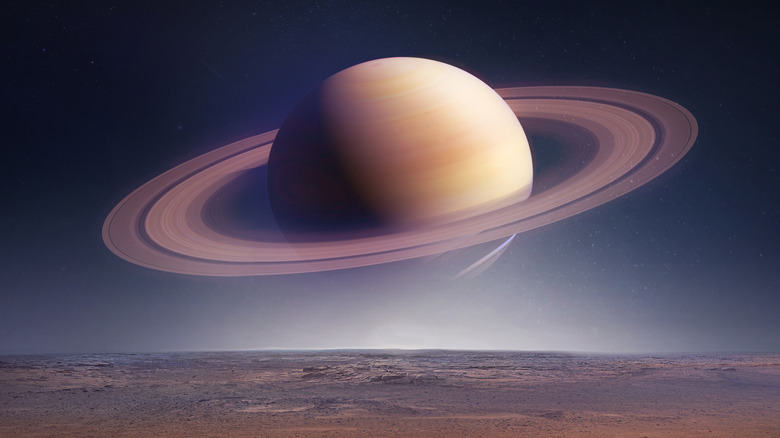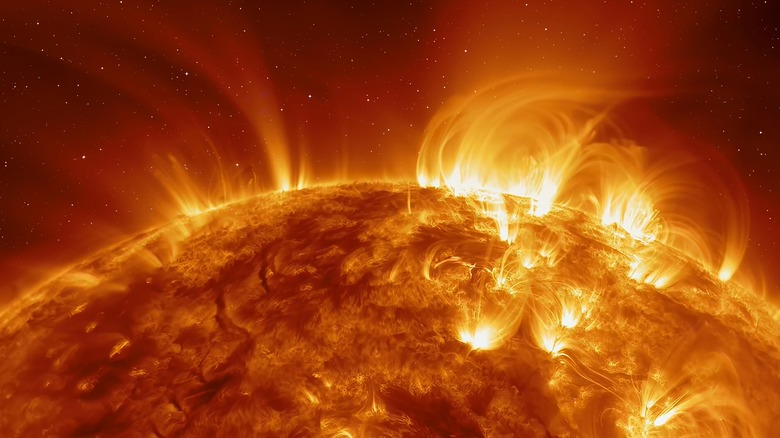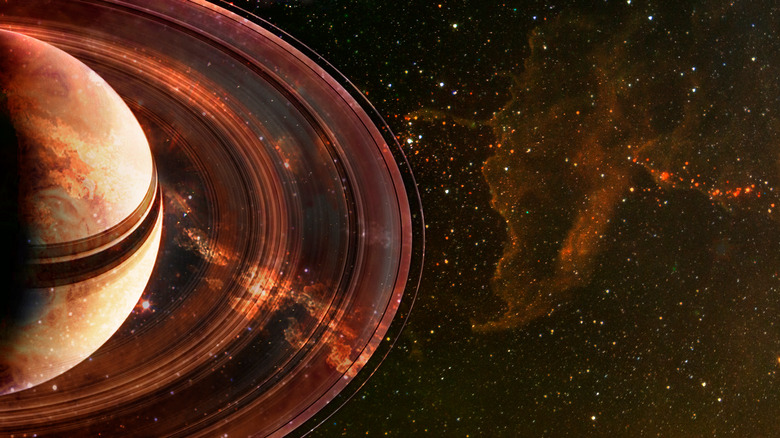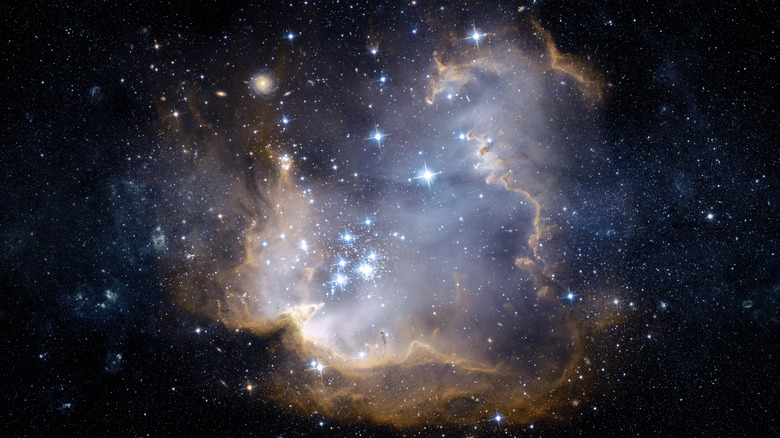This Planet Has Rings 200 Times Larger Than Saturn
Astronomers have made an incredible discovery on a planet far, far away. While searching the skies, astronomers at the Leiden Observatory in the Netherlands discovered a gigantic ring system with a star and a planet inside of it (via The University of Rochester). Astronomers had never found a ring system outside of our own solar system until Eric Mamajek and Matthew Kenworthy discovered this one in 2012, nicknamed "super Saturn".
As astronomers researching exoplanets, Mamajek and Kenworthy examine planets outside of our solar system, as reported by the ABC. The best way for them to learn about new planets or stars is by watching them over a long period of time. If a star suddenly goes dark, astronomers will wonder if a planet or other obstruction is blocking it, giving them a clue to what lies so many millions of miles away.
That's what happened with J1407. In 2007, they noticed the star was twinkling, alerting them that some object was rotating around the firey sphere.
What's inside the ring system?
This star surrounded by supersized rings is called J1407, and the planet that revolves around the star is referred to as J1407-b (via The University of Rochester). Surrounding the star are humongous rings that are about 120 million kilometers, or 74.5 million miles, in diameter. If you were to collect all the dust that these rings were made out of, it would be a pile of debris about the size of planet Earth.
New information about the exoplanet and its rings was revealed in a 2015 paper by Matthew A. Kenworthy and Eric E. Mamajek, published in The Astrophysical Journal. They revealed that J1407-b's rings take about a decade to make one revolution around the planet.
The ring system surrounding J1407 hides what's in the middle — a bright star (via The University of Rochester). Similar to the sun that heats our planet, J1407 also produces heat and light. But about 95% of the light J1407 makes is blocked by the dusty rings surrounding it.
J1407's massive rings
The J1407 system contains either a brown dwarf or a young giant, but astronomers aren't 100% certain yet, according to NASA. A brown dwarf is sometimes referred to as a "failed star" because it doesn't give off light, and can look invisible (per NASA). The classification refers to its size, too — brown dwarfs are 15 to 75 times larger than Jupiter. If it ends up being a young giant, J1407-b would be a gaseous planet, similar to Saturn or Jupiter, but much, much bigger (via The University of Rochester).
Astronomers believe the J1407 system probably contains a huge star comparable to our sun. However, since it is quite hard to see, further research will be needed to confirm their theories of what lies in J1407's orbit.
The ABC reports that the planet has 30 rings wrapping around it. These are apparently so big that if the rings were in our solar system on the planet Saturn, we could easily spot it, no telescope needed. The rings would appear so immense that we could even see the gaps between them with the naked eye. Professor Matthew Kenworthy, who works at the Leiden Observatory based in the Netherlands, estimates that it would appear to be two or three times bigger than Earth's moon.
A young planet
The planet J1407b is still super young — only 16 million years old, the ABC reports. That's a mere blip in time compared to our own solar system, which is 4.5 billion years old.
The University of Rochester reports that over the next few million years, the rings will grow thinner as dust and rock combine to form satellites. These floating rocks will help create spaces between rings, clearing a path as they rotate around the planet again and again. Scientists believe this is actually how Saturn and Jupiter formed their orbiting rocks, but this type of satellite formation is exceedingly rare.
The University of Rochester encourages amateur astronomers to keep an eye on "super Saturn" for now, and continue to watch the skies for undiscovered planets and stars. They encourage anyone with fresh findings to report them to The American Association of Variable Star Observers so that astronomers can better understand our universe.



